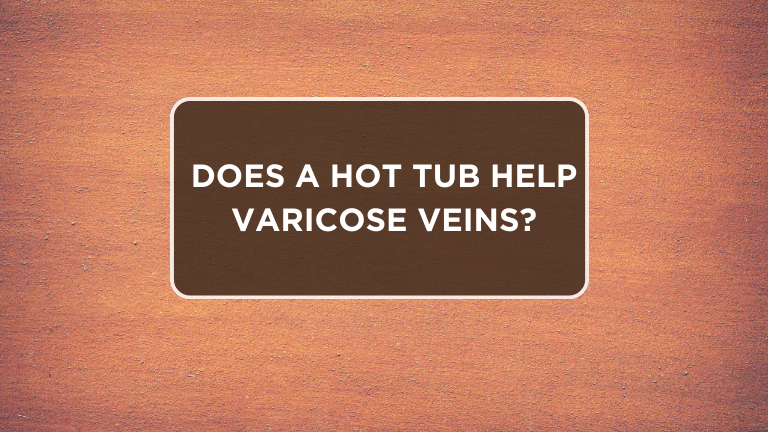Varicose veins are a common condition where veins become enlarged, swollen, and twisted, often appearing as blue or purple bulges under the skin. They usually occur in the legs and are caused by weakened vein walls and valves that allow blood to pool. Many people with varicose veins seek relief from symptoms like pain, swelling, and discomfort. One potential remedy is soaking in a hot tub, but does it really help with varicose veins? Let’s explore how hot tubs can impact this condition and whether they offer any benefits or risks.
>> Soothe tired, aching legs with this varicose vein cream – click here to see the difference! <<
1. How Hot Water Affects Circulation
Soaking in a hot tub can affect the body in several ways, especially in terms of blood circulation:
- Improved Blood Flow: Warm water promotes vasodilation, meaning it causes blood vessels to expand, which can improve circulation. For people with varicose veins, this may help alleviate some symptoms by improving blood flow in the affected area.
- Relaxation of Muscles: The heat from the water can also help relax muscles and relieve tension, which may reduce the discomfort caused by varicose veins.
What Happens to the Veins in Warm Water?
- Temporary Relief: When you immerse your body in a hot tub, the warm water helps to relax the veins, temporarily relieving pressure. This could lead to a feeling of reduced heaviness or discomfort, especially in the legs.
- Reduced Swelling: The heat can encourage blood flow and reduce fluid retention, which may temporarily decrease swelling in the legs and feet.
2. Hot Tub Benefits for Varicose Veins
While hot tubs won’t cure varicose veins, they may provide several short-term benefits for those suffering from this condition:
Pain and Discomfort Relief
- Soothing Effect: The warm water in a hot tub can be soothing, especially for those who experience throbbing or aching in the legs due to varicose veins. Soaking in warm water may offer temporary pain relief and relaxation.
- Stress Reduction: Stress can exacerbate the pain from varicose veins, and a hot tub can help reduce stress, which may improve overall comfort.
Improved Circulation
- Promotes Circulation: As mentioned earlier, the heat in a hot tub encourages blood vessels to widen, which can promote blood flow and relieve congestion in the veins. For individuals with varicose veins, this could help reduce the feeling of heaviness and fatigue in the legs.
Muscle Relaxation
- Relieves Tension: Hot tubs can also relax the muscles around the veins, which may help reduce the strain on the veins and decrease leg discomfort.
>> This spider vein cream helps reduce appearance and discomfort – check it out now! <<
3. Potential Risks of Hot Tubs for Varicose Veins
While hot tubs can provide relief, there are some risks to consider for individuals with varicose veins:
Excessive Heat
- Worsening of Symptoms: Prolonged exposure to hot water may, in some cases, exacerbate symptoms of varicose veins. If the water is too hot, it could cause blood vessels to expand too much, potentially worsening swelling and discomfort after you exit the hot tub.
- Increased Pressure: For some people, the heat might cause blood to pool more in the lower legs, increasing pressure in the veins and leading to more discomfort, especially if the hot tub is used frequently or for extended periods.
Avoiding Hot Tubs with Severe Varicose Veins
- If varicose veins are severe or accompanied by complications like ulcers, clotting, or deep vein thrombosis, it’s important to consult with a healthcare provider before using a hot tub. In such cases, the heat might not be beneficial and could pose a risk to your health.
4. Recommendations for Using a Hot Tub with Varicose Veins
If you have varicose veins and would like to use a hot tub, keep the following tips in mind to ensure you maximize the benefits while minimizing risks:
1. Limit Your Time in the Hot Tub
- Keep it Short: Avoid prolonged soaks in hot water. Limit your time in the hot tub to 15-20 minutes to prevent overheating and excessive pressure on your veins.
2. Opt for Lukewarm Water
- Avoid Too Much Heat: If you have varicose veins, it’s best to use warm water rather than hot water. The water temperature should be comfortable but not scalding, ideally between 98°F and 102°F (37°C to 39°C).
3. Alternate with Cold Water
- Contrast Therapy: Alternating between hot and cold water can be beneficial for varicose veins. Cold water can help constrict blood vessels, reducing swelling, while warm water can help with circulation. This contrast therapy can improve vein health and reduce discomfort.
4. Elevate Your Legs
- Leg Elevation: While soaking in the hot tub, try to elevate your legs to encourage better blood circulation and reduce swelling. This position can provide additional relief from varicose vein discomfort.
5. Consult a Doctor
Before using a hot tub as a remedy for varicose veins, especially if you have other health concerns or complications, it’s a good idea to speak with a healthcare provider. They can provide personalized advice based on the severity of your condition and your overall health.
Conclusion: Does a Hot Tub Help Varicose Veins?
Soaking in a hot tub can provide temporary relief from the discomfort associated with varicose veins by improving circulation, reducing swelling, and relaxing muscles. However, hot tubs should not be seen as a treatment for varicose veins, as they do not address the underlying causes of the condition. For best results, use hot tubs in moderation, avoid excessively hot water, and consider combining hot tub use with other treatments like compression stockings or leg elevation. If you have severe varicose veins, consult with a healthcare provider for the most effective treatment options.

